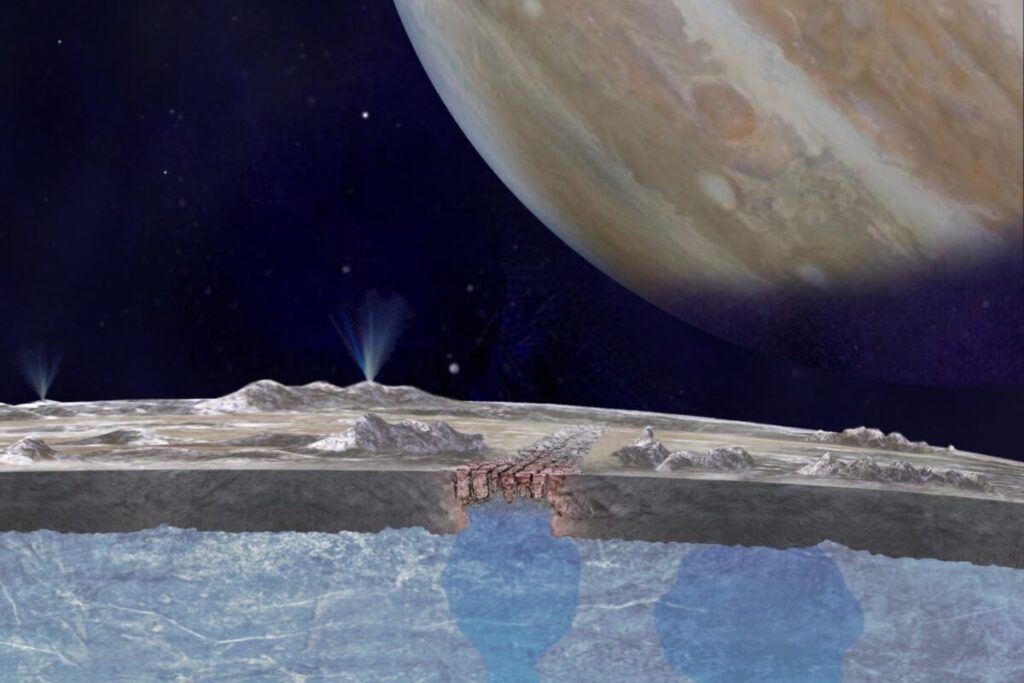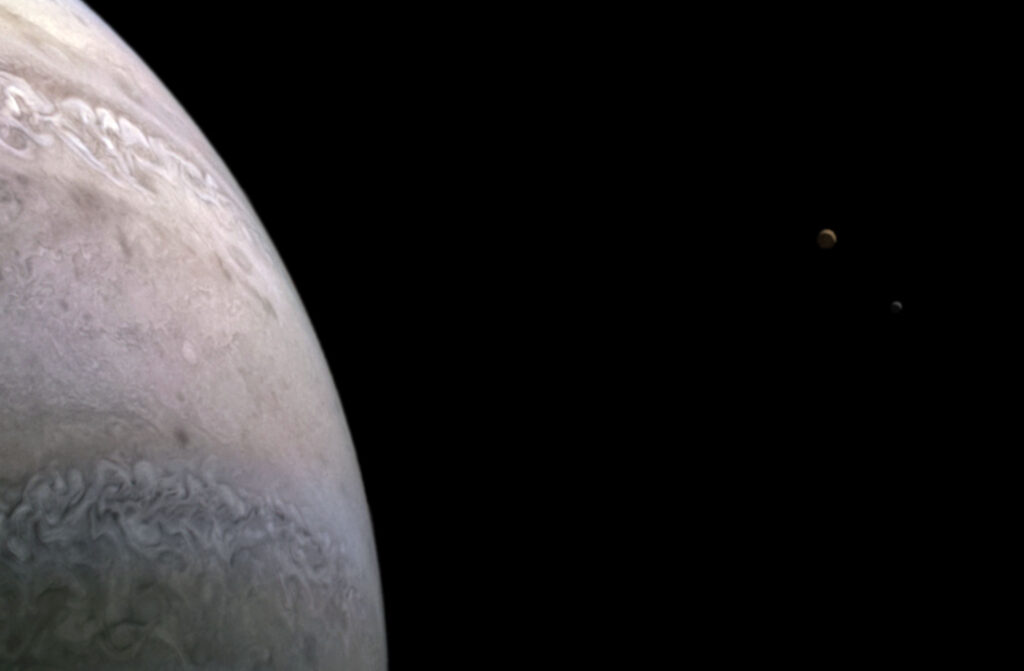Scientists have been searching for signs of life in the solar system and beyond for decades. One of the most intriguing places to look for life is Europa, a moon of Jupiter that has a thick layer of ice covering a vast ocean of salty water. Europa is one of the most promising candidates for hosting life, because it has two essential ingredients: liquid water and energy. But how does Europa get its energy? And what does that mean for its potential for life? In this article, we will explore these questions and more, based on the latest findings from NASA’s Juno mission. Juno is a spacecraft that orbits Jupiter and studies its structure, atmosphere, magnetosphere, and moons. Juno has recently measured the rate of oxygen production at Europa, and the results are surprising. We will explain how Juno made these measurements, why they are important, and what they imply for Europa’s astrobiological possibilities. So, buckle up and get ready for a journey to the icy moon of Europa!
Findings

The first thing we need to understand is how Europa produces oxygen. Europa is constantly bombarded by charged particles from Jupiter’s powerful magnetic field. These particles, called plasma, hit the surface of Europa and split the frozen water molecules into oxygen and hydrogen atoms. Some of the oxygen atoms stay on the surface, forming a thin atmosphere, while some of the hydrogen atoms escape into space. This process is called radiolysis, and it is the main source of oxygen production at Europa. But how much oxygen does Europa produce? And how does Juno measure it?
To answer these questions, we need to look at the data collected by Juno’s Jovian Auroral Distributions Experiment (JADE) instrument. JADE is a device that measures the energy and direction of electrons and ions in Jupiter’s magnetosphere. JADE can also detect the hydrogen atoms that escape from Europa’s surface. By measuring the amount of hydrogen outgassing from Europa, JADE can estimate the amount of oxygen production by radiolysis. This is because for every oxygen atom that stays on the surface, there is a hydrogen atom that escapes into space. So, by counting the hydrogen atoms, JADE can infer the oxygen atoms.
Using this method, JADE has calculated the rate of oxygen production at Europa to be around 26 pounds every second (12 kilograms per second). This is equivalent to 1,000 tons of oxygen every 24 hours, enough to keep a million humans breathing for a day. This is a remarkable amount of oxygen, but it is also much lower than most previous estimates, which ranged from a few pounds to over 2,000 pounds per second (over 1,000 kilograms per second). Why is there such a big difference? And what does that mean for Europa’s ocean?
Implications
The reason for the discrepancy between JADE’s estimate and previous estimates is that JADE has a more direct and accurate way of measuring the hydrogen outgassing from Europa. Previous estimates were based on models and assumptions that may not reflect the reality of Europa’s surface and plasma environments. JADE’s estimate is more reliable because it is based on actual observations and measurements. However, JADE’s estimate is also not perfect, because it depends on the plasma conditions and the orbital geometry of Juno. JADE can only measure the hydrogen outgassing when Juno passes close to Europa, which happens once every 53 days. Therefore, JADE’s estimate may not capture the variability and complexity of Europa’s oxygen production over time and space.

Nevertheless, JADE’s estimate has important implications for our understanding of Europa’s potential for life. One of the implications is that Europa’s ocean may have less oxygen than previously thought. Oxygen is a key element for life as we know it, because it can be used as a source of energy by living organisms. However, too much oxygen can also be harmful, because it can create oxidative stress and damage biological molecules. Therefore, finding the right balance of oxygen is crucial for life to exist and thrive. JADE’s estimate suggests that Europa’s ocean may have a lower oxygen concentration than Earth’s ocean, which could make it more hospitable for life. However, this also depends on other factors, such as the thickness of the ice crust, the circulation of the ocean, and the presence of other chemicals and minerals.
Another implication of JADE’s estimate is that some of the oxygen produced by radiolysis may work its way into the ocean as a possible source of metabolic energy. This could happen through cracks and fissures in the ice crust, or through plumes of water vapor that erupt from the surface. These processes could transport oxygen and other nutrients from the surface to the ocean, creating a link between the two environments. This could also create a diversity of habitats and niches for life to exploit. For example, some organisms may live near the surface, where they can use the oxygen and sunlight, while others may live near the bottom, where they can use the heat and chemicals from hydrothermal vents. The possibility of such a complex and dynamic ecosystem is one of the reasons why Europa is so fascinating and exciting to explore.
Conclusion
In this article, we have learned about the latest findings from NASA’s Juno mission, which measured the rate of oxygen production at Europa using data from the JADE instrument. We have explained how Europa produces oxygen by radiolysis, how Juno measures it by counting the hydrogen outgassing, and why Juno’s estimate is lower than most previous estimates. We have also discussed the implications of these findings for Europa’s potential for life, and how they could affect our understanding of Europa’s ocean and its astrobiological possibilities. We have seen that Europa is a unique and intriguing world, with a vast internal ocean of salty water, a thin atmosphere of oxygen, and a powerful interaction with Jupiter’s magnetic field. Europa is one of the most promising places to look for life in the solar system, and Juno’s mission is helping us to unravel its mysteries and secrets. We hope you enjoyed this article and learned something new and interesting about Europa and its oxygen production. Thank you for reading and stay tuned for more updates from Juno and other missions to the icy moon of Europa!



















